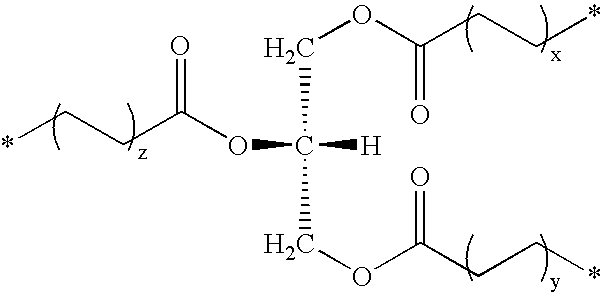Paraffinic Biologically-Derived Distillate Fuels With Bio-Oxygenates For Improved Lubricity And Methods Of Making Same
a bio-oxygenate and distillate technology, applied in the direction of biofeedstock, fuels, fatty acid chemical modification, etc., can solve the problems of poor lubricity properties of isoparaffinic distillate fuels and inability to be used as jet fuels
- Summary
- Abstract
- Description
- Claims
- Application Information
AI Technical Summary
Benefits of technology
Problems solved by technology
Method used
Image
Examples
Embodiment Construction
[0010]As mentioned above, in some embodiments, the present invention is directed to methods for modifying biologically-derived oils for use as transportation and / or other fuels, e.g., particularly in the case of the former, such that they comply with current transportation fuel specifications including, but not limited to, energy content, cold properties, and lubricity requirements. Accordingly, in some embodiments, the present invention is generally directed to methods for making fuels from biomass by subjecting triglyceride-bearing biomass to mild hydroprocessing and, optionally, catalytic isomerization. The mild hydroprocessing of the triglyceride-bearing biomass serves to partially-hydrodeoxygenate at least some of the triglycerides, thereby retaining some oxygenates in the biofuel product, whereby the oxygenates provide enhanced lubricity.
1. Definitions
[0011]The term “biofuel,” as defined herein, is a fuel that is biologically-derived, i.e., from a biofuel precursor of biologic...
PUM
| Property | Measurement | Unit |
|---|---|---|
| weight percent | aaaaa | aaaaa |
| weight percent | aaaaa | aaaaa |
| wt % | aaaaa | aaaaa |
Abstract
Description
Claims
Application Information
 Login to View More
Login to View More - R&D
- Intellectual Property
- Life Sciences
- Materials
- Tech Scout
- Unparalleled Data Quality
- Higher Quality Content
- 60% Fewer Hallucinations
Browse by: Latest US Patents, China's latest patents, Technical Efficacy Thesaurus, Application Domain, Technology Topic, Popular Technical Reports.
© 2025 PatSnap. All rights reserved.Legal|Privacy policy|Modern Slavery Act Transparency Statement|Sitemap|About US| Contact US: help@patsnap.com

